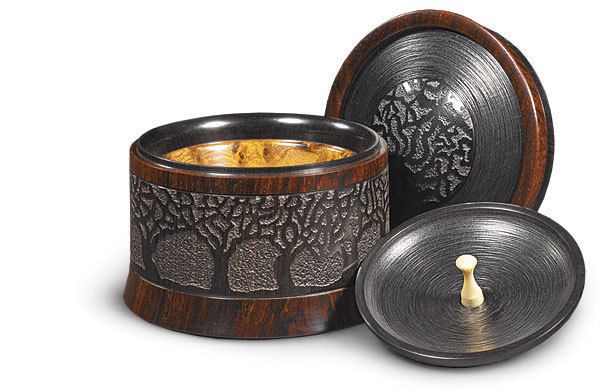
Steven Kennard’s work (back cover of FWW #220) combines everyday turning techniques with his own innovations—seen in the rings, layers, and carving—to deliver an exquisite end product. His work is the sum of decades of experience, an artist’s eye for beauty, and a smart sequence of operations. In this box, an African blackwood body is bound by a cocobolo collar and foot, and lined with thuja burl. A blackwood and cocobolo lid fits perfectly. In the end, creating this small box took as much precision and planning as a piece of furniture.
|
Attach the foot. After turning the body to size and cutting a slight rabbet into the bottom, Kennard uses cyanoacrylate glue to attach the foot. |
|
|
The lining is next. After hollowing the body, he turns a solid cylinder, glues it into the body, and then hollows that, too. |
|
|
A place for the collar. Re-grabbing the foot, he turns away the tenon on the body and replaces it with a rabbet. |
|
Turning the two-part lid. Kennard grabs a tenon on the lid blank to both hollow it and turn a rabbet for another contrasting collar. After fitting the lid to the body, he tapes them together and turns the top of the lid. |
|
|
Collar is a turned ring. Turning the ring as shown is an expert technique. A safer way is to leave the ring attached to a larger blank while fitting it, and then part it away at the end. |
|
|
Engraving takes the box to another level. Kennard worked freehand over a couple of days to create this tree motif, using different-size jeweler’s burrs on a rotary tool. |
Photos: Steven Kennard (finished piece), Ellie Kennard (action); drawings: John Tetreault


























Comments
Great article and beautiful work!
Log in or create an account to post a comment.
Sign up Log in